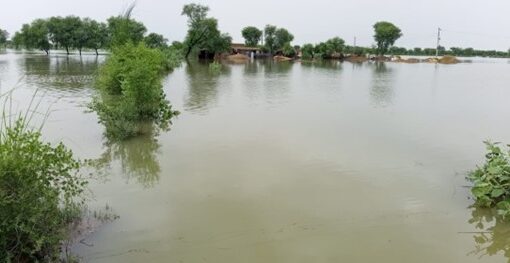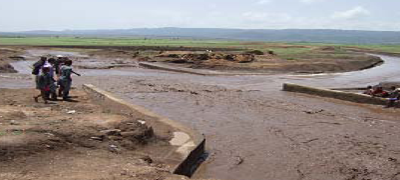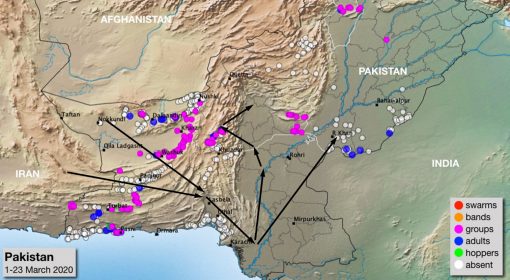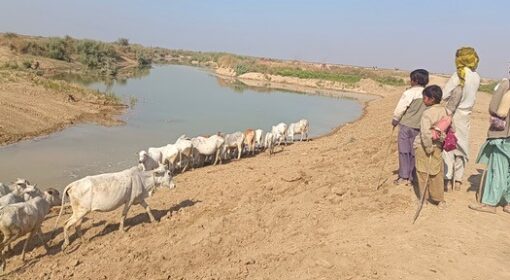By Ashfaque Ahmed Soomro and Frank van Steenbergen

Making earthen structures to divert and guide short term floods and irrigate land with the flood water is a common technique in many spate irrigated areas. In spate irrigated areas of Sindh province in Pakistan, the earthen diversion structures go by the name of ‘Gandho’. This time-tested practice is quite effective but requires repairing and remaking of the earthen bunds. Here the value of good organization is evident: doing the repetitious work, bringing together the different groups of farmers involved in it and overcoming petty differences. The timely repair of the bunds ensure that the temporary short-term floods are put to productive use and avoids that downstream areas are flooded.
Here we share a success story of mobilization, capacity building and farmer-led rehabilitation of Bahalwal Jo Gando bund in Dadu, Sindh. The Bahalwal Jo Gando bund harnesses the flash floods from Naj Gaj that originated in the Khyrther mountains and distributes flood water over a large command area. In the processes groundwater is recharged and flood pressure for downstream areas is released, also salvaging land there. Under the NEWARB (New Water Rights for Basin Management and Inclusivity in Spate Irrigated Areas) program’ implemented by RDF in partnership with MetaMeta and RVO FDW a Water Users Association was formed. This Water Users Association brought together farmers of head, middle and tail reaches of the 12,000-ha large area. This did a lot of good: being organized in a WUA, the community ensured the repair of the access bridge, set up a vocational training program for girls and ensured the permanent presence of a teacher in the local school.
The main task of the WUA however was to to better manage short term floods and take initiatives in their own specific areas for the timely rehabilitation of embankments. This is how the ‘Bahawal Jo Gandho’ came back to life again. The Bahawal Jo Gandho bund distributes water to more than 50 villages to irrigate around 12,000 hectares. It was totally damaged in 2020 due to very high level of flood in upstream section which completely damaged the earthen bund in three to four sections. Farmers did not rehabilitate the bund at the time due to the relative high cost and some underlying discontent and conflict. The NEWARBI RDF teams intervened and the identified this issue and managed it through farmers matching grant mechanism. It required a sum of PKR. 3.3 million (Euro 10,000). The project made a contribution in the shape of rent and fuel of tractors, which amounted PKR. 0.8 million (24%). The bulk of the expenses were managed by the Water User Association. The effort served to rebuild 1.5-kilometer length of the diversion bund with a height of 3 meter. This effort produced a major miracle – bringing more than 3200 hectares under cultivation with farmers growing sorghum, millet, maize, mustard, mung beans, sesame and different grasses. The total value of this crop was probably close to 556 million PKR. The bund was again damaged in the floods of 2022. The WUA rebuilt it immediately with a very small symbolic financial contribution from the project. These interventions are low cost, but high impact and high benefit. This is the everyday magic of being united, taking care of things and turning threats into shared productive assets.
 | 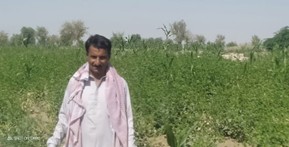 |
| Photo 2: Sorgham and Cluster Bean (Mixed Cropping) cultivation in Naj Gaj | |
